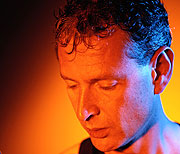
FRIDAY, Feb. 12 (HealthDay News) — The Web is filled with products and practices that promise to “detoxify” the body through various means, from extreme diets to spa treatments to sweating.
Though some may be relatively harmless, the desire to detox was brought to a tragic conclusion last fall when three participants died and several were made seriously ill during a pricey sweat lodge ceremony in Arizona. Self-help guru James Arthur Ray was arrested Feb. 3 and charged with three counts of manslaughter in the deaths.
Doctors say the notion that you can — or should — undertake special efforts to cleanse the body of impurities is not only not necessary but potentially dangerous. The body has evolved through time to detoxify itself through its own processes, said Dr. Rachel Vreeman, an assistant professor of pediatrics at the Indiana University School of Medicine and co-author of Don’t Swallow Your Gum! Myths, Half-Truths and Outright Lies About Your Body and Health.
When it comes to removing toxins from the body, several organs are designed to do just that.
- The liver plays a major role in breaking down and filtering substances from the bloodstream that the body can’t use.
- The kidneys remove substances such as urea, a byproduct of protein metabolism.
- The gastrointestinal tract, including the colon, is also designed to get rid of what the body cannot use and to keep what it needs.
“There are myths that toxins clog up or get stuck in these organs,” Vreeman said. “That is just not true.”
And without a doubt, she said, sweating definitely would not be the way to go about it.
The primary reason we sweat is to regulate the body temperature. When moisture produced by the sweat glands evaporates, it cools the body.
Though the main component of sweat is water, sweat does contain small amounts of dissolved minerals and trace elements, including sodium, lactate, urea, potassium, calcium, magnesium, zinc, copper, nickel, iron, chromium — none of which are considered toxic, Vreeman said.
When you sweat, the major thing you lose is water — something your body can’t survive long without.
“The term ‘detoxify’ is used so often that it makes people think that special steps need to be taken so ‘detoxifying’ happens,” Vreeman said. “It leads to people not trusting their bodies. Your body, however, does not need special cleansing efforts. What it does need is for you to get enough fluids and to eat a healthy, balanced diet.”
That’s not to say sweating, or spending time in a sauna, has been proven to have no health benefits.
Some studies have indicated that saunas lower blood pressure, enhance blood flow and improve cardiac functioning in people with congestive heart failure or other cardiovascular disease, Vreeman said. One study found weak evidence that saunas could help with chronic pain, and another showed minor benefits for some with chronic fatigue syndrome. There have been almost no studies done specifically on steam rooms or sweat lodges.
Western medicine has largely ignored sweat lodges, but they continue to play a significant role in Native American culture, said David Delgado Shorter, an associate professor of world arts and cultures at the University of California, Los Angeles.
“Sweats” have been used for many centuries to purify the mind and body among tribes throughout the Americas, Shorter said. Women in Mayan and Aztec culture, for example, used them as a fertility ritual, and men among the Plains tribes used sweats in preparation for hunts, among other reasons.
“The combination of the physical, emotional, psychological and religious is something many tribes find incredibly important and have fought for their right to do that,” Shorter said.
During earlier times, when colonial settlers and government agents were sometimes violently suppressing Native American religion and culture, tribes fought to hold on to the tradition, for both spiritual and practical reasons. Sweat lodges offered a private place to sing, pray and gather.
That’s why many in the Native American community take offense to non-Native Americans co-opting and charging for participation in sweat lodges, Shorter said.
Anyone thinking of participating in a sweat lodge ceremony or something approximating it should exercise caution, experts say. In harsh environments, hot or cold, the body will work hard to balance how much heat it makes and how much it loses. But if you are in conditions that are too hot for too long, the body may not be able to cool you off sufficiently.
In Arizona, in addition to those who died, 18 people were hospitalized with burns, dehydration, respiratory arrest or kidney failure, according to published reports. Participants, who had paid $9,695 for the “Spiritual Warrior” retreat, said that some people were vomiting, lethargic and collapsing after an hour into the session.
“These are all signs of heat illness and are warnings that your body cannot keep itself cool,” Vreeman said. “Vomiting, thirst, dizziness, being uncoordinated or clumsy are all signs of heat exhaustion or heat stroke. Heat illness can kill you and should be treated as an emergency.”
Someone who becomes overheated should get to a cool place, drink fluids and seek medical care, Vreeman said. People with heart conditions should always talk to their doctor before trying a sweat lodge or sauna.
More information
The American Academy of Family Physicians has more on heat illness.

